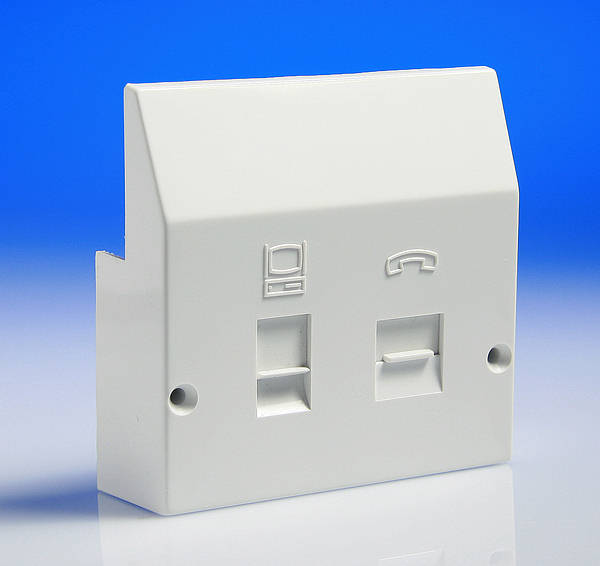Associate
- Joined
- 19 Dec 2009
- Posts
- 1,754
Hi guys, so I'm fortunate enough to have moved into my first house and alongside all the other faff (furniture, etc) I'm wondering what the best way to solve this problem is.
Currently, my modem/router/hub (not sure what the correct nomenclature is) port is located at the front door (hence, the modem/router thing is also located at the front door). It looks like this:

All the action happens upstairs at the rear of the property which means on initial inspection, I'm limited to using WiFi for my office/PC/etc; the same would go for the lounge when that gets set up.
What's frustrating is the lounge actually has two (!) BT phone sockets, but neither of them work which makes me think they were put in, but not actually hooked up. I took one apart and noticed that the small PCB was broken but this wasn't the case in the other one; the conclusion is they're not functional as of now. Here's a picture of that:

So what are my options? Here are the ones I can identify, perhaps in order of simplest to most complex:
Cheers all
Currently, my modem/router/hub (not sure what the correct nomenclature is) port is located at the front door (hence, the modem/router thing is also located at the front door). It looks like this:

All the action happens upstairs at the rear of the property which means on initial inspection, I'm limited to using WiFi for my office/PC/etc; the same would go for the lounge when that gets set up.
What's frustrating is the lounge actually has two (!) BT phone sockets, but neither of them work which makes me think they were put in, but not actually hooked up. I took one apart and noticed that the small PCB was broken but this wasn't the case in the other one; the conclusion is they're not functional as of now. Here's a picture of that:
So what are my options? Here are the ones I can identify, perhaps in order of simplest to most complex:
- Trail a very long ethernet cable through the house to my PC.
- Use powerline adapters (I haven't had the best of luck with these to be honest).
- Trail a fairly long ethernet cable through my house to a switch, then connect the devices I want to the switch and have lots of cables going everywhere.
- Get someone in to figure out why the phone sockets in my lounge don't work, fix those, and move the router into the lounge.
- Get the broadband socket relocated to somewhere more sensible
- Go full throttle and get ethernet ports installed and distributed throughout the house.
Cheers all


